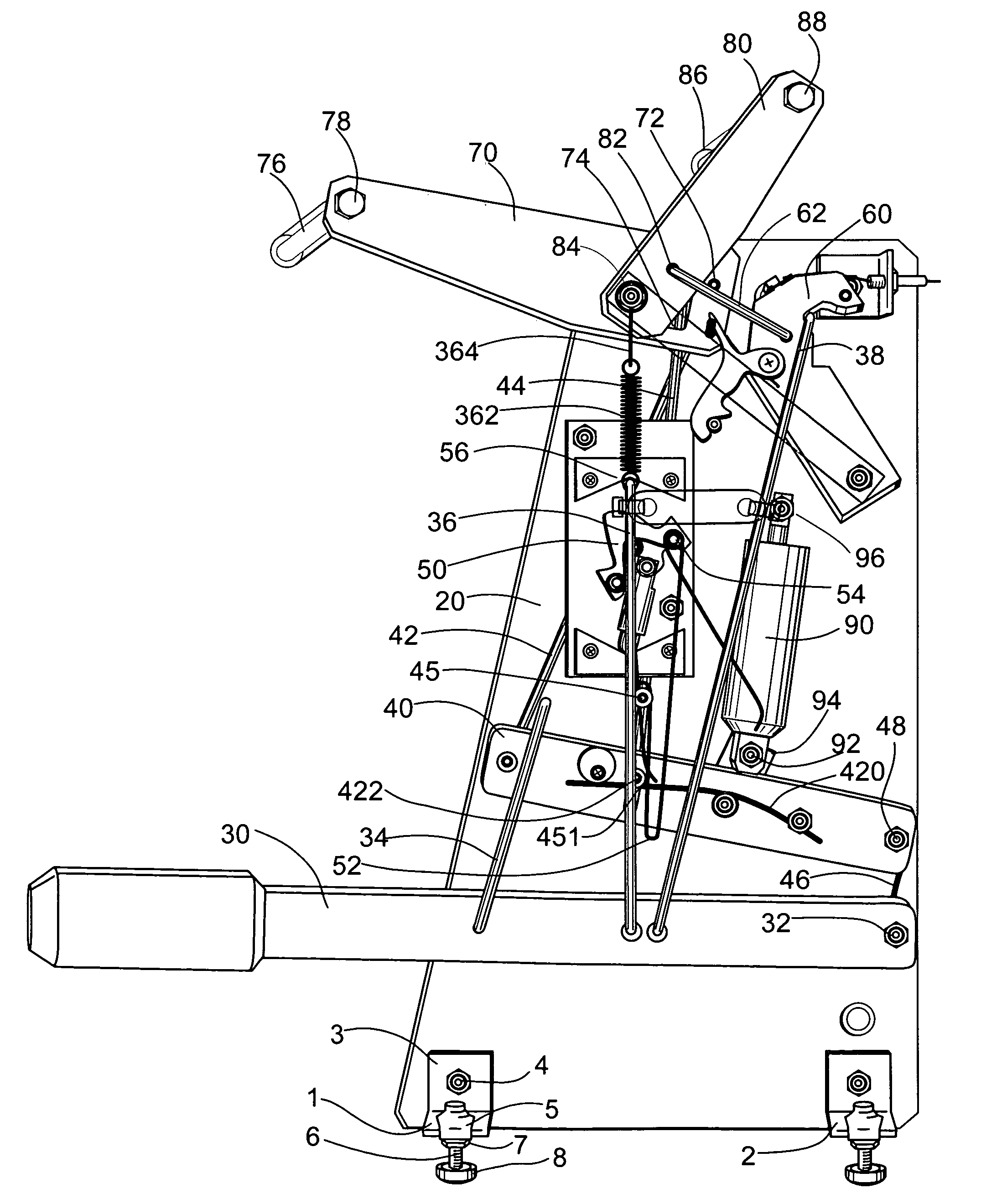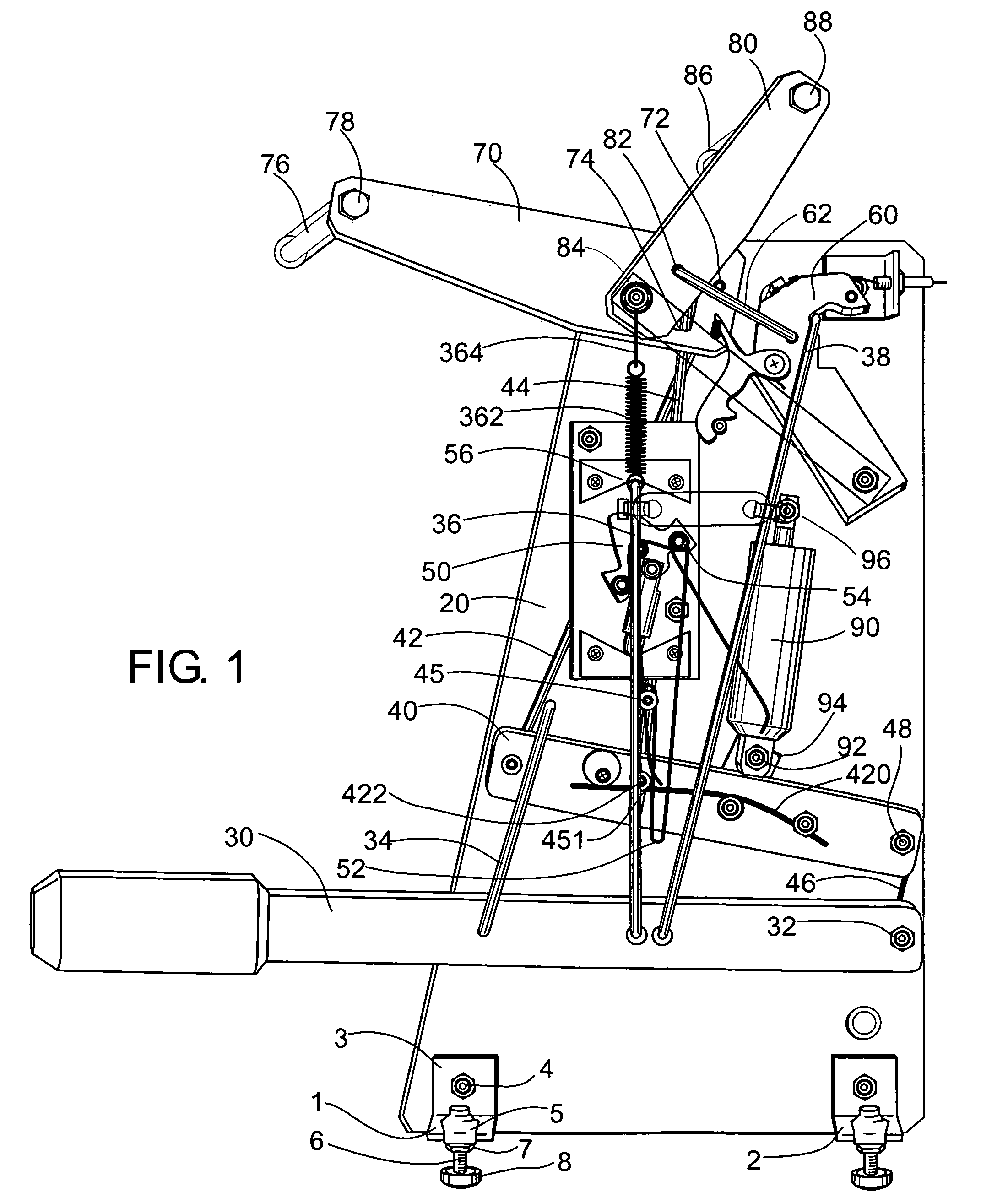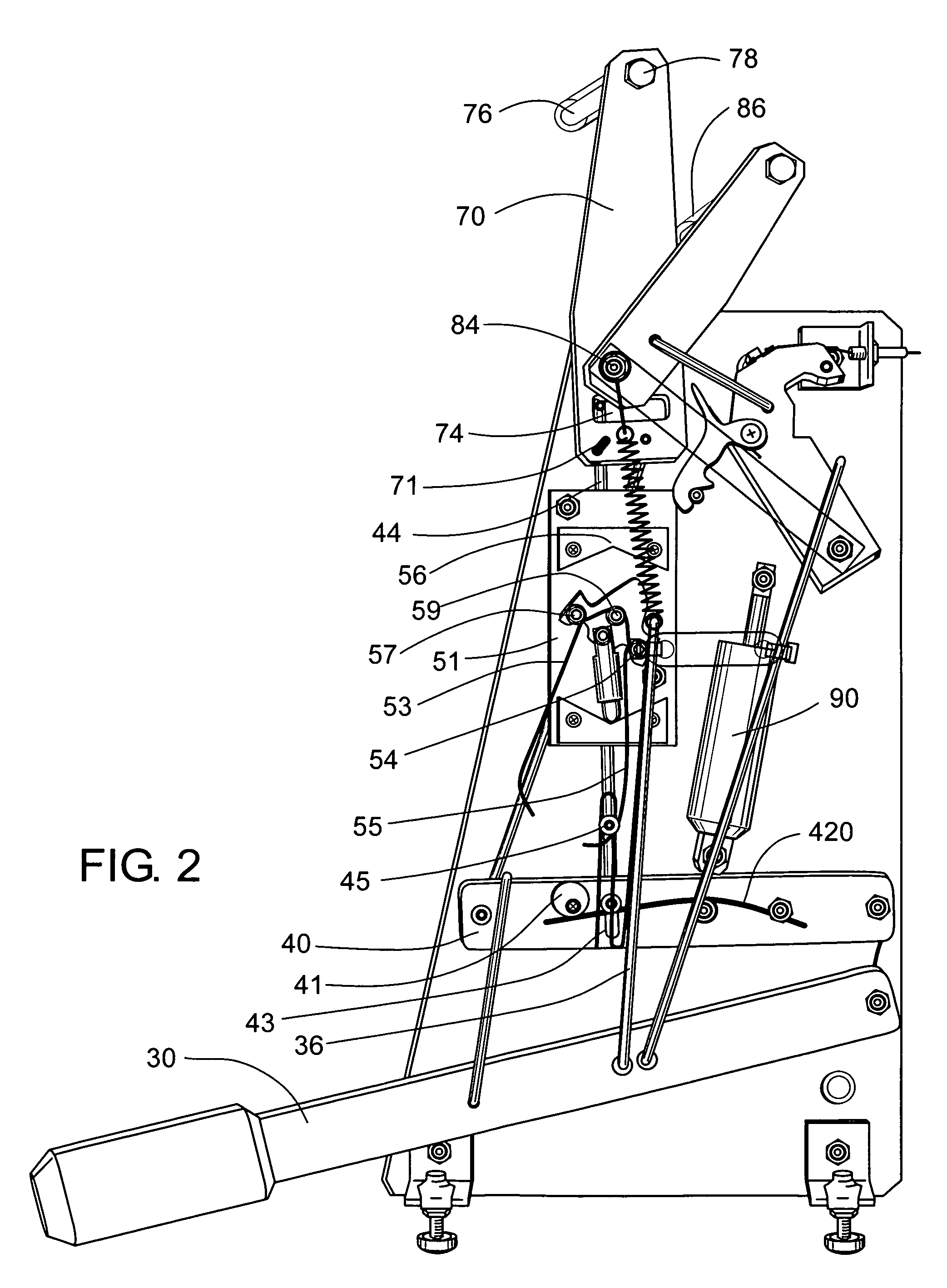Hands-free toilet attachment
a toilet and hand-free technology, applied in the field of hand-free toilet attachments, can solve the problems of not easy to revise the habit of men, receiving bacteria and other germs from the seat, and falling into the bowl, etc., to achieve the effect of reducing the cost of materials, facilitating calculation, and improving reliability and durability
- Summary
- Abstract
- Description
- Claims
- Application Information
AI Technical Summary
Benefits of technology
Problems solved by technology
Method used
Image
Examples
first embodiment
[0061]For clarity in the detailed description the following definitions are adopted:
[0062]A toilet system on which an embodiment of this application is put into use has as existing equipment the following:
[0063](a) a toilet bowl, with a rim on top, and with rim height, or toilet height, defined as the distance from the top of the rim of a toilet bowl to a mounting surface, standardized in definite ranges;
[0064](b) a toilet seat 100, sometimes abbreviated as a seat 100, attached conventionally to swivel up vertically and down horizontally, on top of the toilet bowl through standardized apertures on the toilet bowl with predetermined nuts and bolts;
[0065](c) a water tank 104, having a tank container with a flat surrounding-wall top, sometimes abbreviated as a tank top; a tank cover; a flushing mechanism actuated with a flushing rod 108 inside the tank container; and a flushing lever outside of the tank container; for the conventional flushing of the toilet bowl;
[0066](d) a toilet-seat...
PUM
 Login to View More
Login to View More Abstract
Description
Claims
Application Information
 Login to View More
Login to View More - R&D
- Intellectual Property
- Life Sciences
- Materials
- Tech Scout
- Unparalleled Data Quality
- Higher Quality Content
- 60% Fewer Hallucinations
Browse by: Latest US Patents, China's latest patents, Technical Efficacy Thesaurus, Application Domain, Technology Topic, Popular Technical Reports.
© 2025 PatSnap. All rights reserved.Legal|Privacy policy|Modern Slavery Act Transparency Statement|Sitemap|About US| Contact US: help@patsnap.com



